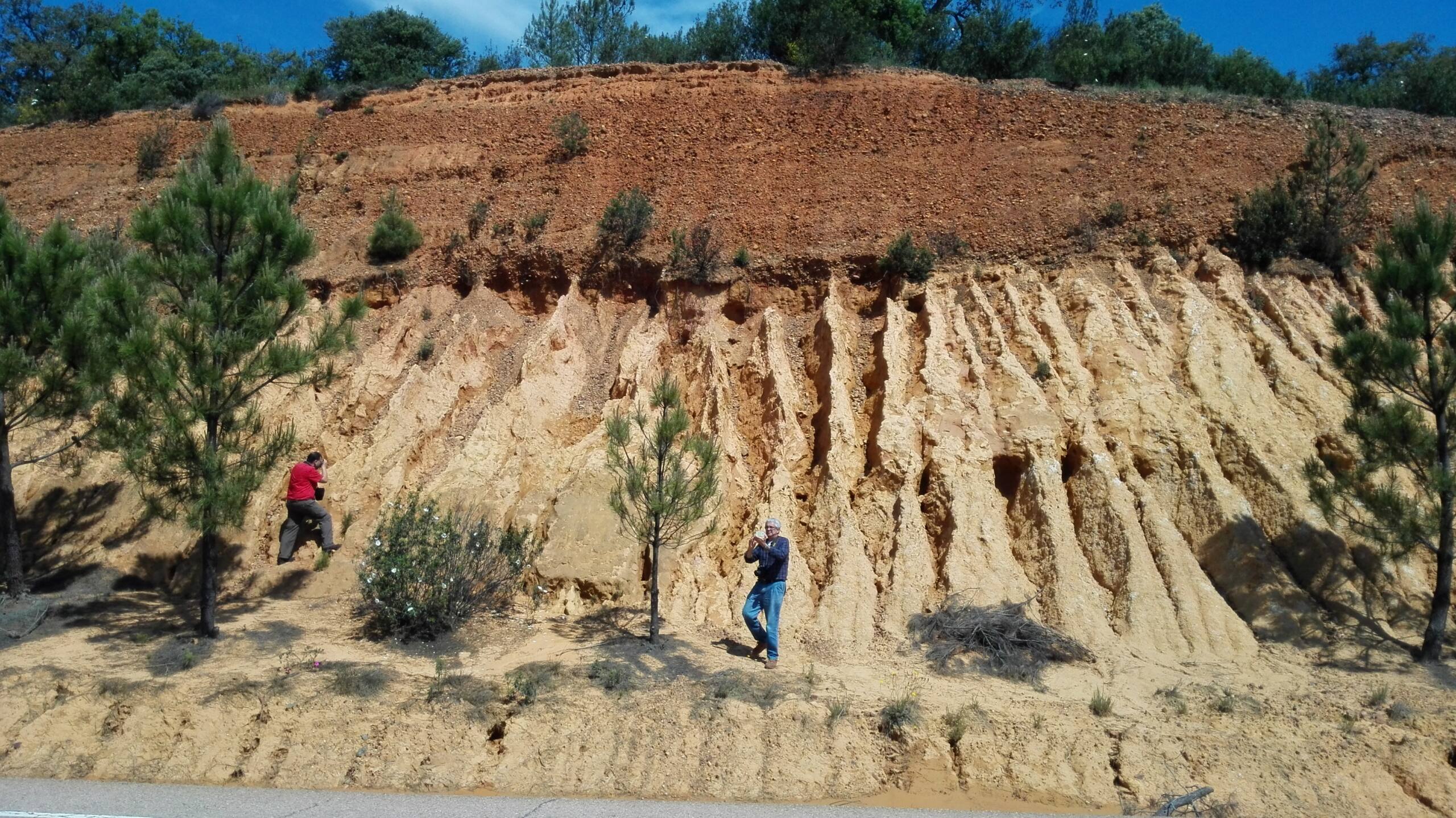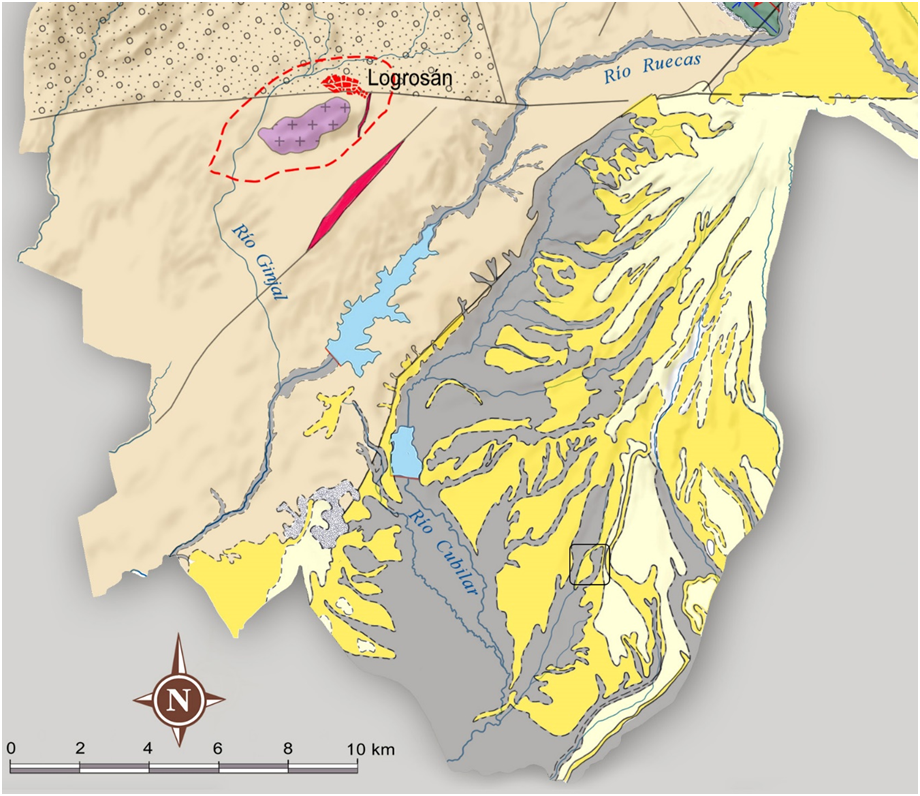LOCATION AND ACCESS
It is located between kilometres 20 and 21 of the EX-116 road. It can be accessed by all types of vehicles, whoch can be parked on the right-hand side of the road in the direction of Obando.
Geoparque Mundial UNESCO
Geoparque Villuercas > Nº54 – Guadiana river terraces
It is located between kilometres 20 and 21 of the EX-116 road. It can be accessed by all types of vehicles, whoch can be parked on the right-hand side of the road in the direction of Obando.
From Puerto de San Vicente to the limits of the Geopark in the Obando direction, you can observe the best Cenozoic outcrops, from the lower levels of the Lower Miocene, to the spectacular Rañas de Cañamero (Geosite 5).


The geosite includes Cenozoic materials (Neogene and Quaternary). The Miocene materials are made up of sandstones with an abundant clayey matrix and red silts on which there are discordant channelled fluvial materials, possibly from the Middle-Late Pleistocene, made up of gravels with slightly rounded pebbles and sands. They represent the first fluvial terraces and are the first evidence in the Geopark of the transition from a Neogene endorheic basin, where poorly classified fluvial-lake materials from the Neogene and Lower Pleistocene (rañas) were deposited, to the exorheic regime of the current Guadiana basin. The important Pleistocene sea level drops caused by the onset of the Quaternary Glaciation, with a large accumulation of ice in the northern hemisphere, determined the transition from the endorheic Guadiana, Tagus and Duero basins to the current exorheic basins with opening to the Atlantic. The abrupt lowering of the base level of the river that formed what is now the lower stretch of the Guadiana accelerated its down-cuttimng action, capturing the riverbeds of the endorheic basin possibly at the height of Olivenza. In these new exorheic basins, the rapid erosion of the unconsolidated Neogene materials and the Lower Pliocene ravines took place, generating a new type of deposits made up of stepped fluvial terraces. The materials exposed here present a morphology of discordant palaeochannels over the Miocene materials. The geomorphological contrast between the two materials is very evident, the impermeable Miocene materials show an important gully erosion due to the flow of surface water which does not affect the overlying and permeable materials of the terrace.
